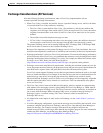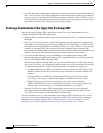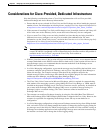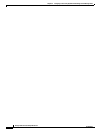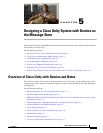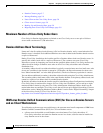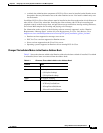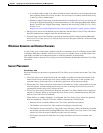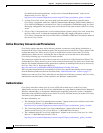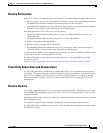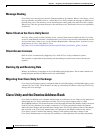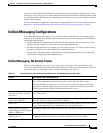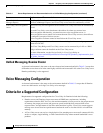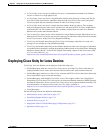
5-4
Design Guide for Cisco Unity Release 5.x
OL-14619-01
Chapter 5 Designing a Cisco Unity System with Domino as the Message Store
Overview of Cisco Unity with Domino and Notes
Changes That csClient Makes to the Mail File
When csClient software is installed on a client workstation, the elements in Table 5-2 are added to the
mail file. If csClient is uninstalled, these elements are removed from the mail file.
Address Book Server, Message Store Server, and Mail Drop Server
Cisco Unity interacts with Domino servers that perform a variety of functions. Depending on the number
of Domino users, these functions may be all on one Domino server or spread out across many servers:
• Address book servers are the servers on which Cisco Unity accesses Domino address books. There
are three types of address book:
–
The primary address book (commonly names.nsf) is the address book in which Cisco Unity
creates Person documents with mail files for the default accounts and for distribution lists, and
from which Domino user data is imported to create Cisco
Unity subscribers.
The primary address book is the home of the Cisco Unity system mailbox; this mailbox sends
voice messages from outside callers. (Voice messages from Cisco
Unity subscribers are
identified as coming from those subscribers.) Each Cisco
Unity server must have a system
mailbox.
You choose the primary address book server during Cisco Unity installation.
Table 5-2 Elements That csClient Adds to the Mail File
Element Name
Forms • UCDisplayInfo
• Voice Message
• (Display Received Voice Message)
• (UCMemo)
Views • Voice Inbox
• ($UCInbox)—this view is added when the user is imported into Cisco Unity
Agents • (UCEnable)
• (UCPreferences)
Images • Phone.jpg
• act_EDIT.GIF
• act_Listen.GIF
Subforms • UCPlayer
• (DisplayFwrdContent)
• (UCItems)
• (UCVoiceNote)
• (VoiceDeliveryOptions)
Script libraries • Core UC Classes
• Core UC Strings
• Unified Communications




